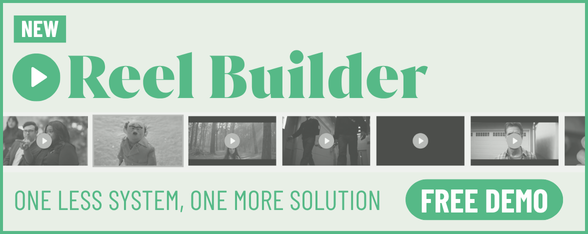
The Brandon Agency Brings 100 Years of Craftmanship to the Digital Age

Nick McNeill is the interactive director at Brandon, a full-service marketing agency. With more than two decades of experience, Nick leads cross-functional teams across UX strategy, development and analytics to deliver digital transformation at scale.
He specialises in solving complex business challenges through user-centred thinking: crafting data-driven digital experiences that are as intuitive as they are impactful.
WHAT YOU MADE
We transformed Putnam Rolling Ladders, a company with over a century of craftsmanship, from a brochure-style website into a fully interactive, direct-to-consumer e-commerce platform. At the center of this transformation is a robust, UX-forward product configurator that lets homeowners, contractors, and interior designers custom-build and purchase complex ladder systems entirely online.
Built with thousands of variables in mind – from track layout to wood species and hardware finishes – the configurator removes the need for hour-long phone calls and manual quoting. This platform brought a traditionally high-touch, analogue process online and unlocked a multimillion-dollar digital sales channel that didn’t exist before.
THE PROBLEM
Putnam came to us with a desire to ‘modernise’ its site—but it quickly became clear that the real problem wasn’t just the look and feel of the website. The entire sales process relied on long back-and-forth phone calls with ladder specialists, often requiring detailed room measurements, multiple stakeholders (like designers and builders), and custom quotes.
This model was a bottleneck. As demand grew, so did the burden on its small customer service team. It was unsustainable.
After digging in, we realised the real opportunity was not just to improve the site, it was to fully digitise the complex configuration and sales process, and reduce the dependency on manual intervention.
IDEATION
We started by mapping the entire offline sales process: how customer inquiries were handled, what steps specialists took on calls, and what decisions had to be made along the way. From there, we broke it down into a series of logical steps that could be translated into an online flow.
Early on, we debated multiple shapes for the solution.From a simple lead capture form with follow-up to a fully interactive visual builder. We knew from research that interior designers and DIY-savvy homeowners wanted more control and transparency, so we leaned into the configurator route. The real challenge was making something this complex feel simple.
We looked to high-end kitchen and garage-planning tools, automotive build-and-price flows, and even IKEA’s planners to inspire a format that could balance design, detail, and user clarity.
PROTOTYPE & DESIGN
Prototyping meant designing for clarity and flexibility. One of the most important features we developed was the ability to embed the full ladder configuration in the URL. This allowed users to easily save, share, and pick up where they left off which is critical for designer-client relationships and internal team reviews.
We worked closely with Putnam’s internal ladder-design specialists to ensure every decision point was accurate and practical. Their knowledge was essential. They flagged where customers typically get confused, which options are most commonly bundled, and how errors can occur in measurement.
From a tech side, we had to balance logic-heavy form progression with a user interface that never felt overwhelming. There were hundreds of variables, so we needed to design a system that asked the right questions at the right time.
LIVE
Testing and iteration were baked into our rollout. We launched an internal beta first, using real-world quote examples and letting the Putnam team run tests themselves. Their feedback led to smarter defaults, clearer explanations around measurement, and refinements to how track layout was handled in multi-wall rooms.
After launch, data revealed how users moved through the flow, where they dropped off, where they paused, and what options were most commonly chosen. That informed follow-up optimisation cycles and also gave Putnam powerful insight into product demand and customer behavior.
Putnam went from a website that could describe their products to a website that could sell them automatically and at scale. This shift unlocked a new, digital-first revenue stream and dramatically reduced the time their team spent on repetitive, manual quoting.
What once required an hour-plus phone call can now happen online in under ten minutes without human intervention.
For us, the most rewarding part was watching a historic, analogue craft business embrace digital transformation in a way that didn’t sacrifice quality or craftsmanship but by enhancing it.















